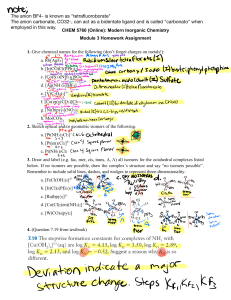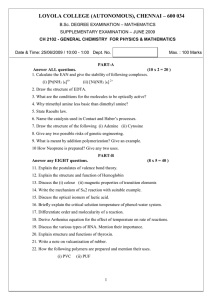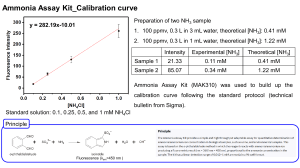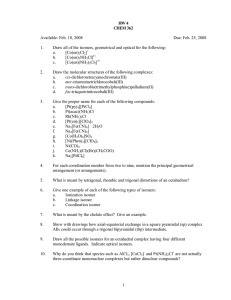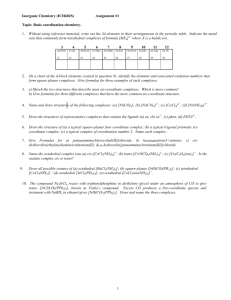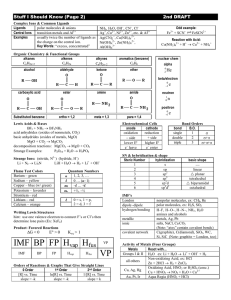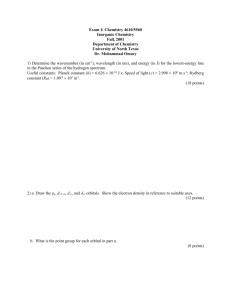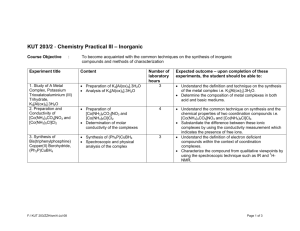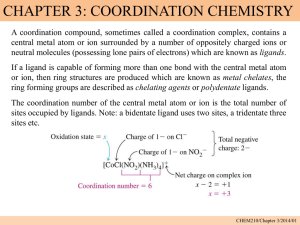Coordination Complex Reaction Mechanisms Exercises
advertisement
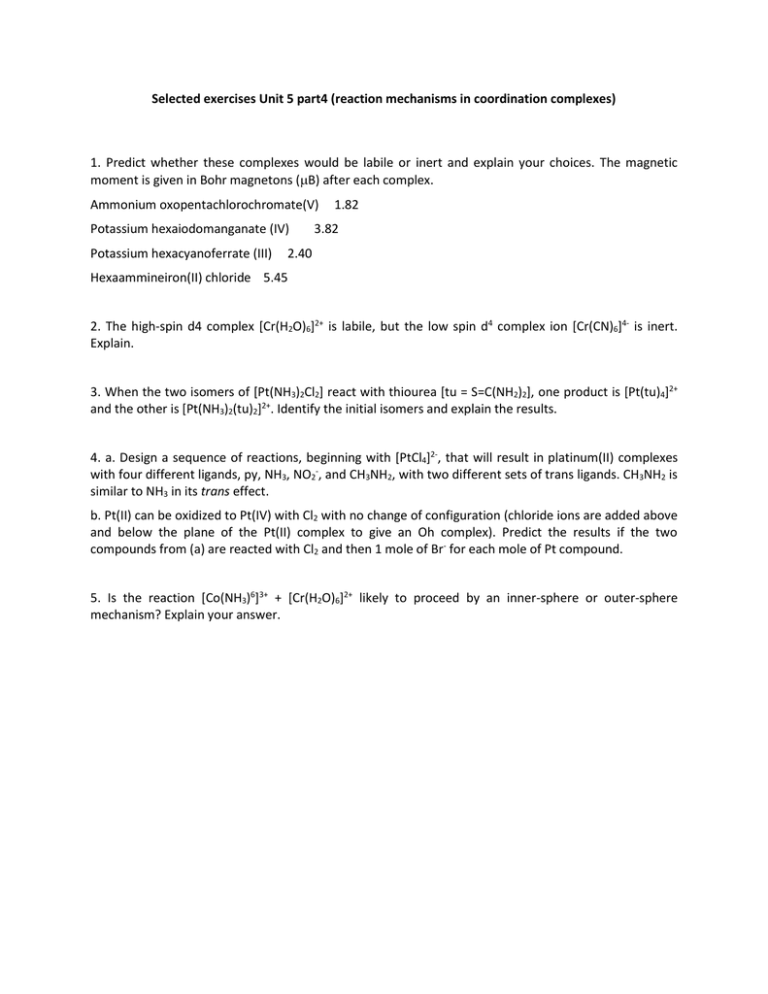
Selected exercises Unit 5 part4 (reaction mechanisms in coordination complexes) 1. Predict whether these complexes would be labile or inert and explain your choices. The magnetic moment is given in Bohr magnetons (B) after each complex. Ammonium oxopentachlorochromate(V) Potassium hexaiodomanganate (IV) Potassium hexacyanoferrate (III) 1.82 3.82 2.40 Hexaammineiron(II) chloride 5.45 2. The high-spin d4 complex [Cr(H2O)6]2+ is labile, but the low spin d4 complex ion [Cr(CN)6]4- is inert. Explain. 3. When the two isomers of [Pt(NH3)2Cl2] react with thiourea [tu = S=C(NH2)2], one product is [Pt(tu)4]2+ and the other is [Pt(NH3)2(tu)2]2+. Identify the initial isomers and explain the results. 4. a. Design a sequence of reactions, beginning with [PtCl4]2-, that will result in platinum(II) complexes with four different ligands, py, NH3, NO2-, and CH3NH2, with two different sets of trans ligands. CH3NH2 is similar to NH3 in its trans effect. b. Pt(II) can be oxidized to Pt(IV) with Cl2 with no change of configuration (chloride ions are added above and below the plane of the Pt(II) complex to give an Oh complex). Predict the results if the two compounds from (a) are reacted with Cl2 and then 1 mole of Br- for each mole of Pt compound. 5. Is the reaction [Co(NH3)6]3+ + [Cr(H2O)6]2+ likely to proceed by an inner-sphere or outer-sphere mechanism? Explain your answer.
